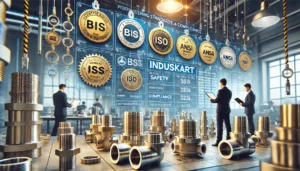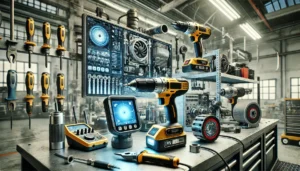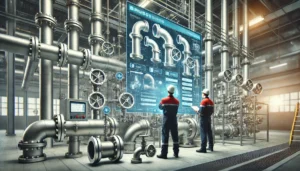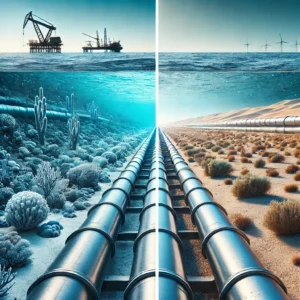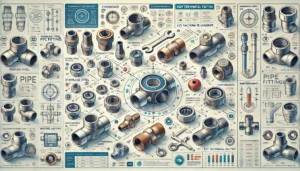Pneumatic and hydraulic systems are often two of the most predominant technologies employed in the modern world for power transmission and mechanical movement control. While both systems effectively utilize fluid to perform work, the principles underlying their operation, components, and the intended uses greatly vary. These variables are particularly important to consider for selecting the most appropriate system for a specific application. This article will analyze the operating principles, advantages, limitations, and ideal applications of pneumatic and hydraulic systems to ensure that you make an informed choice.
Operating Principles
Even though both pneumatic and hydraulic systems focus on fluid energy, they differ in the manner in which they obtain energy, processes used to obtain energy, and the fluids used in the systems themselves.
- Pneumatic systems: It uses compressed air or gas. The air is held within a chamber, when released, performs work by expanding and compressing to move a piston, or rotate a motor. Because air is easily compressible, these systems can perform rapid movements and are classified as highly dynamic, providing an easily controlled fluid flow.
- Hydraulic systems Like the pneumatic systems, hydraulic systems feature particular pumps, motors, valves, and actuators. However, in this system, fluid energy is transferred using pressurized liquids, with oil being the most commonly used. The pressurized liquid is incompressible which enables the system to exert liquid with great precision. Furthermore, pressurized fluids are generated by using a pump which forces the liquid through a pipe towards the actuators and subsequently deriving mechanical energy from it.
Components
Both types of systems have a lot of similarities, yet they differ in materials and layouts because of the disparate characteristics of gases and liquids. Liquid systems are more complex than gas systems which mainly consist of valves and fittings. The greater complexity comes from the fact that they need to contain a lot more pressure and need to allow for more control over force.
- Pneumatic Systems: Gas systems can be defined as arrangements containing air compressors, treatment units designed for filtration and regulation of the air pressure, and valves for flow control. These components are often much more lightweight, easier to repair, and less complex in general due to the nature of the system.
- Hydraulic Systems: Systems that use air, or gas powered systems, generally comprise components such as air compressors, valves, units for treating and regulating the air, and pneumatic cylinders for linear movements. In most cases, these parts are lightweight and uncomplicated due to the system’s nature.
Advantages
There are advantages for each system, which may change for various applications:
- Pneumatic Systems:
- Ease of use and cost savings: Pneumatic systems tend to be less expensive than hydraulic systems and easier to design, install, and maintain.
- Safety: The presence of flammable materials makes it dangerous to operate equipment, but for Pneumatics, systems can be easily operated since air is non-flammable.
- Hygiene: In the food and medical industry, the use of clean air in Pneumatic systems helps avoid contamination by fluids.
- Rapid Action: Unlike other systems, Pneumatic Systems operate at high speeds which helps in rapid actions.
- Hydraulic Systems:
- High Force Generation: Heavy construction and manufacturing activities make use of powerful force, as such, hydraulic systems exercise significantly high forces in comparison to pneumatic systems due to the use of incompressible liquids.
- Control and Accuracy: Unlike Pneumatic Systems, Hydraulics Systems are used in Robotics and heavy machines where a lot of exact movements or forces are needed because they provide better control and precision.
- Energy Efficiency: Unlike Pneumatic Systems, Hydraulics are more energy efficient especially during high force and low speed operations.
- Load Handling: As opposed to the other systems, hydraulic ones have an upper hand when it comes to dealing with varying weights. This, combined with the fact that they are good at lifting and pushing heavy objects, makes them quite efficient.
Limitations
Both systems suffer from various problems which can make one more suitable to a situation than the other.
- Pneumatic Systems:
- Reduced Force Output: Compared to hydraulic systems, pneumatic systems are weaker. The air compressibility works against them and limits the amount of force they are capable of exerting.
- Lack of Precision: The same compressibility results in a lack of precision, meaning that extreme accuracy is difficult for this system.
- Loss of Energy: Pneumatic systems are less efficient in high force situations, causing energy loss during the compression and expansion processes.
- Hydraulic Systems:
- Complexity and Cost: Lacked energy in higher force situations is only one of the downsides. Pneumatic systems Arguably the worst one, is, the need for high pressure pumps, fluid reservoirs and other necessary components makes it far more complicated and expensive.
- Risk of Leakage: Oftentimes, hydraulic fluids are derived from oil, meaning certain leaks can lead to environmental contamination, danger or risk. Contamination or getting rid of dangerous materials is always a hassle.
- Heat Generation: During the use of hydraulic systems, large quantities of heat usually are produced, and these amounts of heat are best regulated with a cooling system, otherwise overheating and system malfunction might occur.
Applications
Different uses of systems are defined by specific needs if the task at hand. In as much as both systems are used in a lot of industries, one will always do better in certain environments and vice versa.
- Pneumatic Systems:
- Manufacturing Automation: Pneumatics is optimized for light assembly, handling, wrapping, as well as automating processes during production due to speed and easy control.
- Transportation and Braking Systems: Unsurprisingly, most trucks and buses use Pneumatics for their brakes because they are quick and very effective in emergency and heavy duty situations.
- Medical Equipment: In medicine, Pneumatic devices are used in dental chairs, patient lifters, wheelchairs, etc. They utilize non-combustible power that is fast and non-explosive.
- Food Processing and Packaging: Pneumatic systems are preferred in food processing plants because cleanliness is a must and fluid contamination is not acceptable.
- Hydraulic Systems:
- Construction Equipment: The use of hydraulic systems in construction machines like diggers, bulldozers, and cranes is very common because of the gripping, pushing, and pulling forces needed for lifting and digging during construction.
- Aerospace: The hydraulic systems of an airplane are used to control flight surfaces, landing gear, and brakes, where safety and performance require precision and powerful force.
- Industrial Machinery: The hydraulic systems of construction machines such as hydraulic presses and injection molding machines enable high force to be generated for shaping, cutting, and molding of materials.
- Oil and Gas: Hydraulic systems are frequently used in the oilfields to operate drilling rigs, pressure control systems, and fluid transmission pipelines which necessitate the use of high pressure.
Hybrid Systems
Some systems that are pneumatic and hydraulic systems hybrids do exploit the advantages of both technologies. Some other components of vehicle suspension systems are also hybrids of pneumatic and hydraulic systems to be more flexible, economical in energy, and sensitive. Using hybrids provides the efficiency of hydraulic force and the speed and flexibility of pneumatic systems. In this instance, all relevant performance features are provided.
Conclusion
Both pneumatic and hydraulic systems have their pros and cons, which makes them appropriate for certain jobs only. Pneumatic systems are most appropriate for high speed work in clean and safe low force settings. However, hydraulic systems are more efficient and effective for heavy work that requires energy-controlled precision. It is essential to analyze the variables of each specific application pertaining to force, speed, precision, safety, and environment and choose the right system for the task at hand in order to enhance performance, cut costs, and keep operations dependable.


